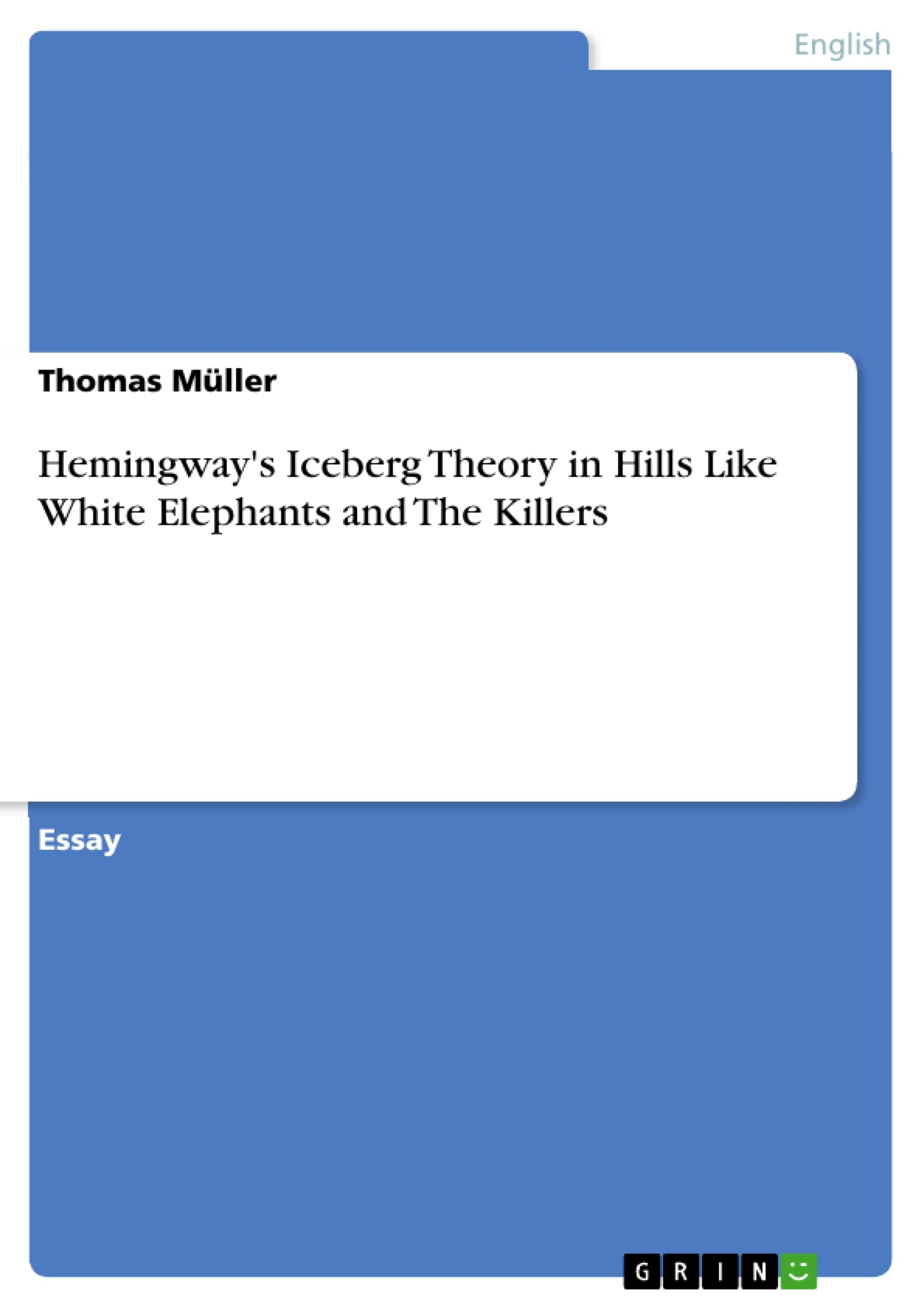Hemingway once said: “If it is any use to know it, I always try to write on the principle of the iceberg. There are seven-eights of it under water for every part that shows. Anything you know you can eliminate and it only strengthens your iceberg. It is the part that doesn’t show. If a writer omits something because he does not know it then there is a hole in the story.”
Hemingway tended to not tell the reader about how the characters in his stories feel or think.
He lets the reader develop his own ideas about the background or intentions of the characters. This Essay will show and compare the use of this theory in two of Hemingway’s short stories, “Hills Like White Elephants” and “The Killers”.
Table of Contents
- Introduction
- 1. The iceberg-theory in “Hills Like White Elephants”
- 2. The iceberg-theory in “The Killers”
Objectives and Key Themes
This essay analyzes Ernest Hemingway's use of the iceberg theory in two of his short stories: “Hills Like White Elephants” and “The Killers”. The essay explores how Hemingway employs this theory to create a sense of tension and emotional depth in his writing, leaving much of the interpretation and emotional experience to the reader.
- Hemingway's iceberg theory: The concept of revealing only a small portion of the story, leaving the rest to the reader's interpretation.
- The role of the reader in shaping the emotional impact of the story.
- The use of ambiguous dialogue and imagery to create a sense of mystery and intrigue.
- The exploration of complex themes such as love, loss, death, and existentialism.
Chapter Summaries
1. The iceberg-theory in “Hills Like White Elephants”
This chapter examines the application of the iceberg theory in “Hills Like White Elephants”. It analyzes how the author uses an ambiguous setting, minimal dialogue, and unspoken emotions to engage the reader in deciphering the characters' motivations and the unspoken tension of the narrative. The chapter explores the symbolism of the landscape and its potential interpretations, as well as the irony and emotional complexity within the dialogue between the man and the woman.
2. The iceberg-theory in “The Killers”
This chapter focuses on the use of the iceberg theory in “The Killers”. It explores how Hemingway creates a sense of dread and unease by introducing the killers without revealing their motives or backstory. The chapter analyzes the characters' ambiguous dialogue and their unspoken emotions, leaving the reader to contemplate the reasons behind their actions. It delves into the character of Ole Andreson, his passive acceptance of death, and the contrasting reaction of Nick Adams, the observer of the events.
Keywords
This essay focuses on Ernest Hemingway's iceberg theory, a writing style characterized by implied meaning, subtle symbolism, and the reader's active role in interpreting the narrative. It examines the application of this theory in two short stories: “Hills Like White Elephants” and “The Killers”. The essay explores themes of ambiguity, emotional complexity, unspoken motivations, and the tension between the known and the unknown within the narrative.
- Quote paper
- Thomas Müller (Author), 2005, Hemingway's Iceberg Theory in Hills Like White Elephants and The Killers, Munich, GRIN Verlag, https://www.grin.com/document/46000




